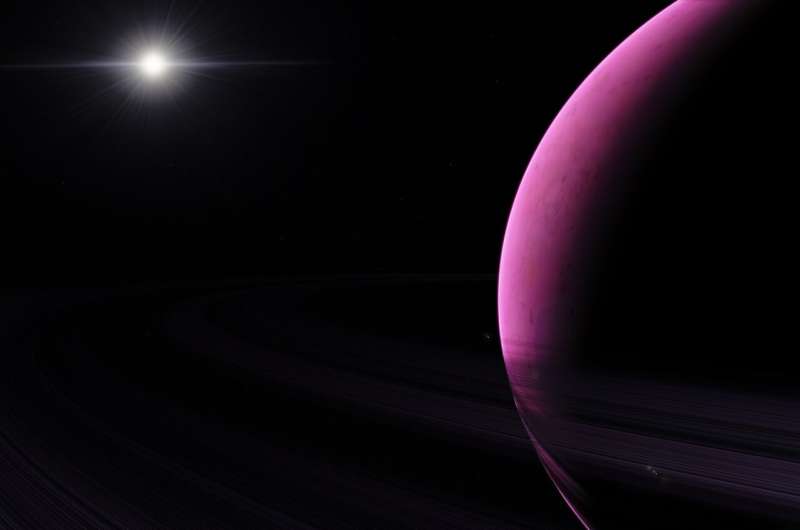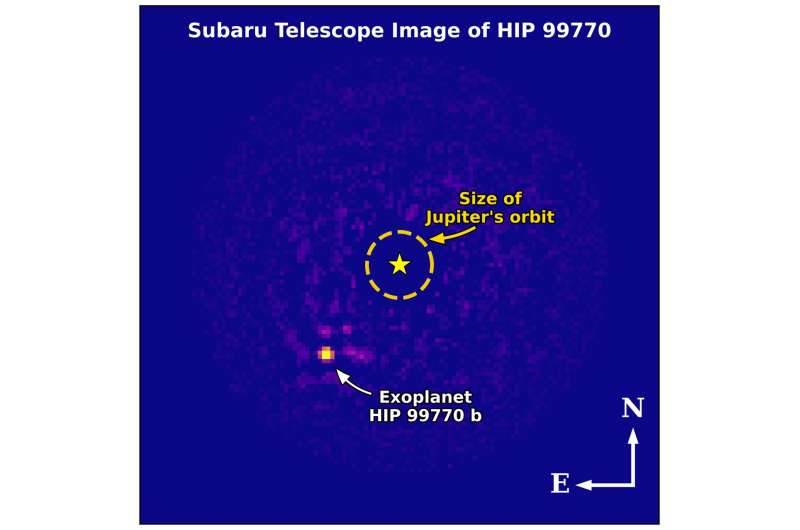This article has been reviewed according to Science X's editorial process and policies. Editors have highlighted the following attributes while ensuring the content's credibility:
fact-checked
peer-reviewed publication
trusted source
proofread
In a research first, team uses precision astrometry to discover new exoplanet outside Earth's solar system

An international research team led by UTSA Associate Professor of Astrophysics Thayne Currie has made a breakthrough in accelerating the search for new planets.
In a paper published in Science, Currie reports the first exoplanet jointly discovered through direct imaging and precision astrometry, a new indirect method that identifies a planet by measuring the position of the star it orbits. Data from the Subaru Telescope in Hawai'i and space telescopes from the European Space Agency (ESA) were integral to the team's discovery.
An exoplanet—also called an extrasolar planet—is a planet outside a solar system that orbits another star. With direct imaging, astronomers can see an exoplanet's light in a telescope and study its atmosphere. However, only about 20 have been directly imaged over the past 15 years.
By contrast, indirect planet detection methods determine a planet's existence through its effect on the star it orbits. This approach can provide detailed measurements of the planet's mass and orbit.
Combining direct and indirect methods to examine a planet's position provides a more complete understanding of an exoplanet, Currie says.
"Indirect planet detection methods are responsible for most exoplanet discoveries thus far. Using one of these methods, precision astrometry, told us where to look to try to image planets. And, as we found out, we can now see planets a lot easier," said Currie.

The newly discovered exoplanet, called HIP 99770 b, is about 14 to 16 times the mass of Jupiter and orbits a star that is nearly twice as massive as the sun. The planetary system also shares similarities with the outer regions of our solar system. HIP 99770 b receives about as much light as Jupiter, our solar system's most massive planet, receives from the sun. Its host star is surrounded by icy debris left over from planet formation, similar to our solar system's Kuiper belt, the ring of icy objects observed around the sun.
Currie and team used the Hipparcos-Gaia Catalogue of Accelerations to advance their discovery of HIP 99770 b. The catalogue consists of data from ESA's Gaia mission and Hipparcos, Gaia's predecessor, providing a 25-year record of accurate star positions and motions. It revealed that the star HIP 99770 is likely being accelerated by the gravitational pull of an unseen planet.
The team then used the Subaru Coronagraphic Extreme Adaptive Optics (SCExAO) instrument, which is permanently installed at the focus of the Subaru Telescope in Hawai'i, to image and confirm the existence of HIP 99770 b.

The discovery of HIP 99770 b is significant, because it opens a new avenue for scientists to discover and characterize exoplanets more comprehensively than ever before, Currie said, shedding light on the diversity and evolution of planetary systems. Using indirect methods to guide efforts to image planets may also someday lead scientists closer to the first images of other Earths.
"This is the first of many discoveries that we expect to have. We are in a new era of studying extrasolar planets," Currie said.
More information: Thayne Currie, Direct imaging and astrometric detection of a gas giant planet orbiting an accelerating star, Science (2023). DOI: 10.1126/science.abo6192. www.science.org/doi/10.1126/science.abo6192
Journal information: Science
Provided by University of Texas at San Antonio



















